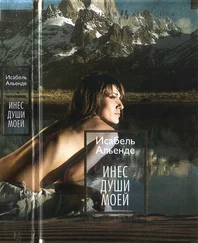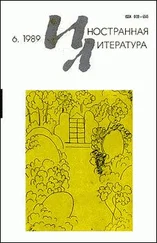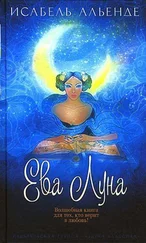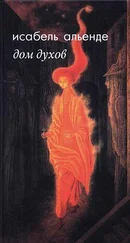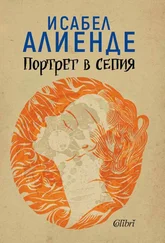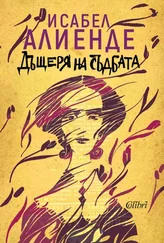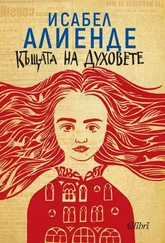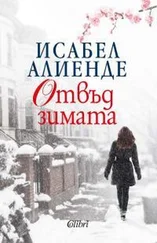“You must be Marcel. I’m your àvia . Are you hungry?” was the grandmother’s way of greeting her grandson. Without waiting for his reply, she handed him a sweet roll from her voluminous bag, where the dog sat beside the cakes. Fascinated, Marcel studied the complicated geography of Àvia ’s wrinkles, her yellow, nicotine-stained teeth, her stiff, gray hair poking like straw from her hat, and her twisted, arthritic fingers. It seemed to him that if she had had antennae, she could have been one of his aliens.
They rode with her in a twenty-year-old taxi that wheezed its way through a city nestling between mountains. According to Carme, this was the capital of spying and smuggling, practically the only two profitable enterprises in those years. She herself dabbled in the latter, because to be a spy you had to have good connections with the European powers and the Americans. More than four years had passed since World War Two ended in 1945, and the devastated cities were recuperating from hunger and ruin, but there were still hordes of refugees and displaced people searching for their place in the world. She explained that during the war Andorra had been a nest of spies, and thanks to the Cold War, it still was. In the past it had been an escape route for those fleeing the Germans, especially Jews and escaped prisoners, who were sometimes betrayed by their guides and ended up murdered or handed over to their enemy to be robbed of the money and jewels they were carrying. “There are several shepherds who became rich all of a sudden, and every year when the thaw comes, bodies appear, their wrists tied with wire,” said the taxi driver, who joined in their conversation. After the war, it was German officers and Nazi sympathizers who passed through Andorra, fleeing to possible destinations in South America. They were hoping to cross into Spain and receive help from Franco. “As for smuggling, it’s almost nothing, just a service to society,” Carme insisted. “Tobacco, alcohol, and little things like that, nothing dangerous.”
Installed in the rustic house that Carme shared with the peasant couple who had saved her life, they sat down to eat a tasty rabbit and chickpea stew with two porrones of red wine and told one another of all their adventures during the previous decade. In the Retreat, when the grandmother decided she didn’t have the strength to go on and the idea of exile was unbearable, she abandoned Roser and Aitor Ibarra to lie down and die of cold as far away from them as possible. To her great regret, she woke the next morning, stiff and ravenous but more alive than she would have wished. She remained where she was, motionless, while all around her the throng of fugitives dragged itself along, in ever decreasing numbers, until by evening she found herself alone, curled up like a snail on the frozen ground.
Carme told them she couldn’t remember what she felt, but she realized it’s hard to die, and to invite death is cowardice. Her husband was dead, and so too perhaps were her two sons, but Roser and Guillem’s child was still alive. That made her determined to go on, but she couldn’t raise herself from the ground. Then a stray puppy came by, following the trail of the refugees, and she let it snuggle up alongside her for some warmth. That animal was her salvation. An hour or two later, a peasant couple, who had sold their produce to the stragglers in the refugee column and were returning home, heard the dog whining and mistook it for a baby. When they saw Carme, they came to her aid.
She lived with them, working the land with great effort and poor results, until the family’s eldest son took them to Andorra. They spent the Second World War there, smuggling anything that came their way between Spain and France, including people, if the opportunity arose.
“Is this the same dog?” asked Marcel, who had it on his lap.
“The very same. He must be eleven years old, and he’s going to live many more. He’s called Gosset.”
“That’s not a name. It means ‘little dog’ in Catalan.”
“It’s name enough. He doesn’t need another one,” his grandmother retorted between two drags on her cigarette.
—
DURING THE MEAL, Carme told them she had found them at long last thanks to Elisabeth Eidenbenz, who had returned to Vienna, still completely devoted to her mission of helping women and children. Vienna had been ferociously bombed, and when she arrived shortly after the end of the war, its starving inhabitants were digging in the garbage for food while hundreds of lost children were living like rats among the ruins of what had once been the most beautiful of imperial cities. In the south of France in 1940, Elisabeth had carried out her plan to create a model maternity home in an abandoned mansion in Elne, close to Perpignan, where she took in pregnant women so that they could give birth in safety. At first these had been Spanish women rescued from the concentration camps, then later Jews, gypsies, and other women escaping from the Nazis. Protected by the Red Cross, the Elne maternity home was meant to stay neutral and not aid political refugees, but Elisabeth paid little attention to this, despite being closely watched. As a result, the Gestapo closed the home in 1944. By then, she had managed to save more than six hundred babies.
As chance would have it, Carme later met one of the lucky mothers in Andorra, who told her how she had her child thanks to Elisabeth. Carme made the connection between that nurse and the name of the person who was to be her family’s contact in France, if they succeeded in getting across. She wrote to the Red Cross, and from one of their offices to another, one country to another, through a persistent correspondence that overcame bureaucratic obstacles and crisscrossed Europe, she finally managed to locate Elisabeth in Vienna.
The nurse wrote to Carme that at least one of her sons, Victor, was still alive, had married Roser, who had a boy called Marcel, and the three of them were in Chile. She had no means of getting in touch with them, but Roser had written to the family that took her in when she left Argeles-sur-Mer. It was difficult to trace the Quakers, who by then were living in London. They had to search in their attic to find Roser’s envelope with the only address they had for her, that of Felipe del Solar’s house in Santiago. And so, after a delay of several years, Elisabeth Eidenbenz succeeded in reuniting the Dalmaus.
Roser, Victor, and Marcel had to return to Chile without her, as it would take a whole year before Carme Dalmau decided she was willing to emigrate and rejoin her family. As she knew nothing about Chile, that long worm at the far south of the map, she began searching in books and asking people if they knew any Chileans she could question, but none passed through Andorra in all that time. She was held back by her friendship with the peasants who had taken her in, and with whom she had lived for many years, as well as her dread at having to travel halfway round the world accompanied by an elderly dog. She was afraid she wouldn’t like Chile. “My uncle Jordi says it’s the same as Catalonia,” Marcel reassured her in one of his letters. Once her mind was made up, she said goodbye to her friends, took a deep breath, and dismissed her worries, ready and willing to enjoy the adventure. She traveled unhurriedly by land and sea for seven weeks with the mutt in a bag, allowing herself time to be a tourist and appreciate other landscapes and languages, try exotic dishes, and compare customs different from her own. Day by day she grew more distant from the past she had known and entered another dimension.
During her years as a schoolteacher she had studied and taught the world, but now she was discovering it was nothing like the descriptions in books or photographs. It was much more complex and colorful, much less frightening. She shared her thoughts with her pet, and wrote them in a school notebook together with her recollections, as a precaution, in case at some point her memory began to fail her. She embellished the facts, because she was aware that life is how we tell it, so why would she jot down trivia?
Читать дальше


